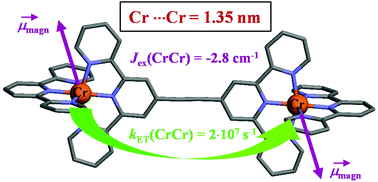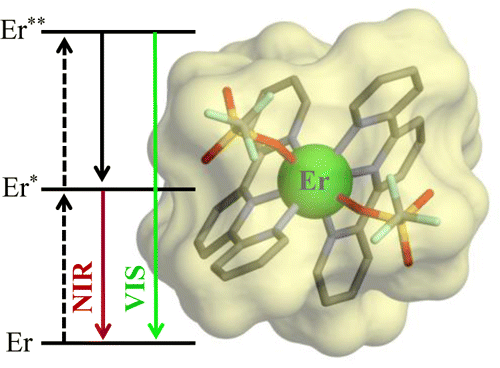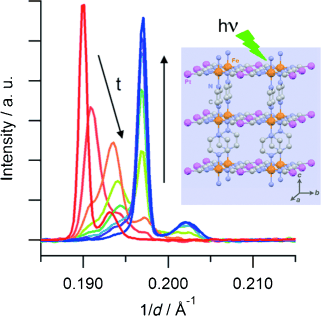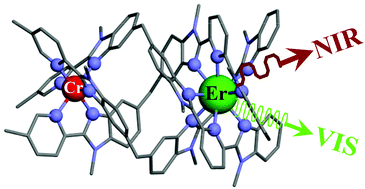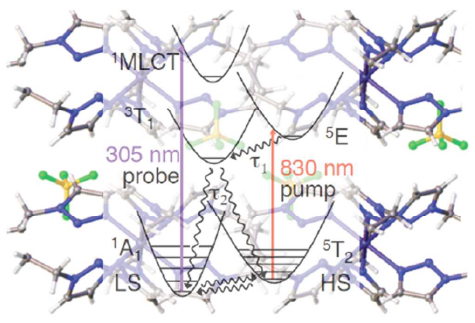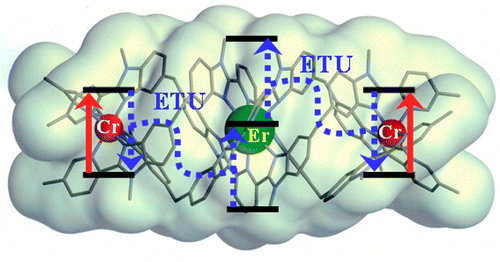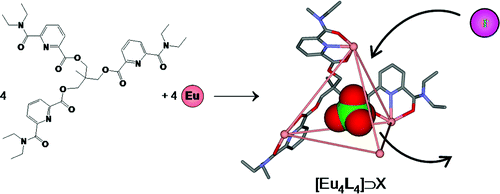| | 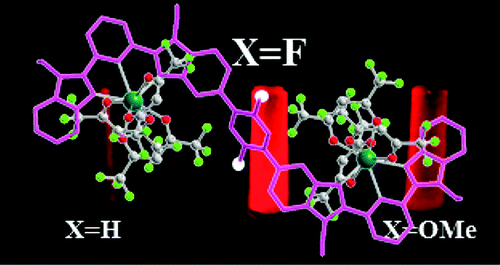  | |
|
This work illustrates a simple approach for optimizing the lanthanide luminescence in molecular dinuclear lanthanide complexes and identifies a particular multidentate europium complex as the best candidate for further incorporation into polymeric materials. The central phenyl ring in the bis-tridentate model ligands L3–L5, which are substituted with neutral (X = H, L3), electron-withdrawing (X = F, L4), or electron-donating (X = OCH3, L5) groups, separates the 2,6-bis(benzimidazol-2-yl)pyridine binding units of linear oligomeric multi-tridentate ligand strands that are designed for the complexation of luminescent trivalent lanthanides, Ln(III). Reactions of L3–L5 with [Ln(hfac)3(diglyme)] (hfac– is the hexafluoroacetylacetonate anion) produce saturated single-stranded dumbbell-shaped complexes [Ln2(Lk)(hfac)6] (k = 3–5), in which the lanthanide ions of the two nine-coordinate neutral [N3Ln(hfac)3] units are separated by 12–14 Å. The thermodynamic affinities of [Ln(hfac)3] for the tridentate binding sites in L3–L5 are average (6.6 ≤ log(β2,1Y,Lk) ≤ 8.4) but still result in 15–30% dissociation at millimolar concentrations in acetonitrile. In addition to the empirical solubility trend found in organic solvents (L4 > L3 >> L5), which suggests that the 1,4-difluorophenyl spacer in L4 is preferable, we have developed a novel tool for deciphering the photophysical sensitization processes operating in [Eu2(Lk)(hfac)6]. A simple interpretation of the complete set of rate constants characterizing the energy migration mechanisms provides straightforward objective criteria for the selection of [Eu2(L4)(hfac)6] as the most promising building block. |




